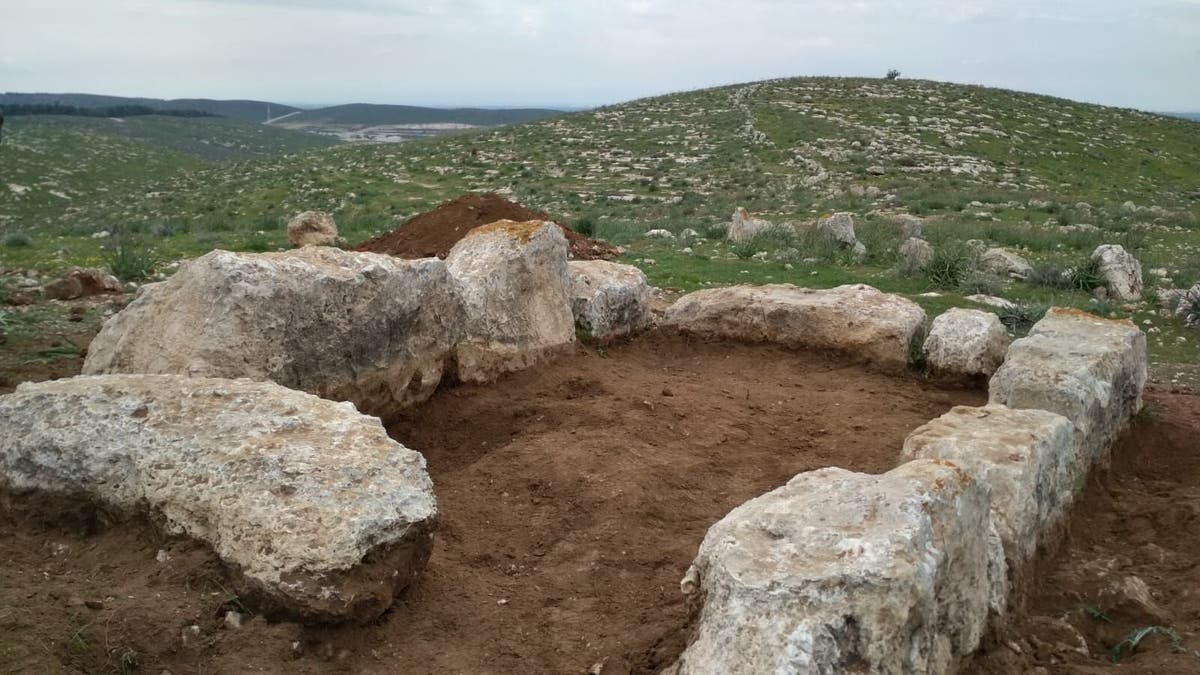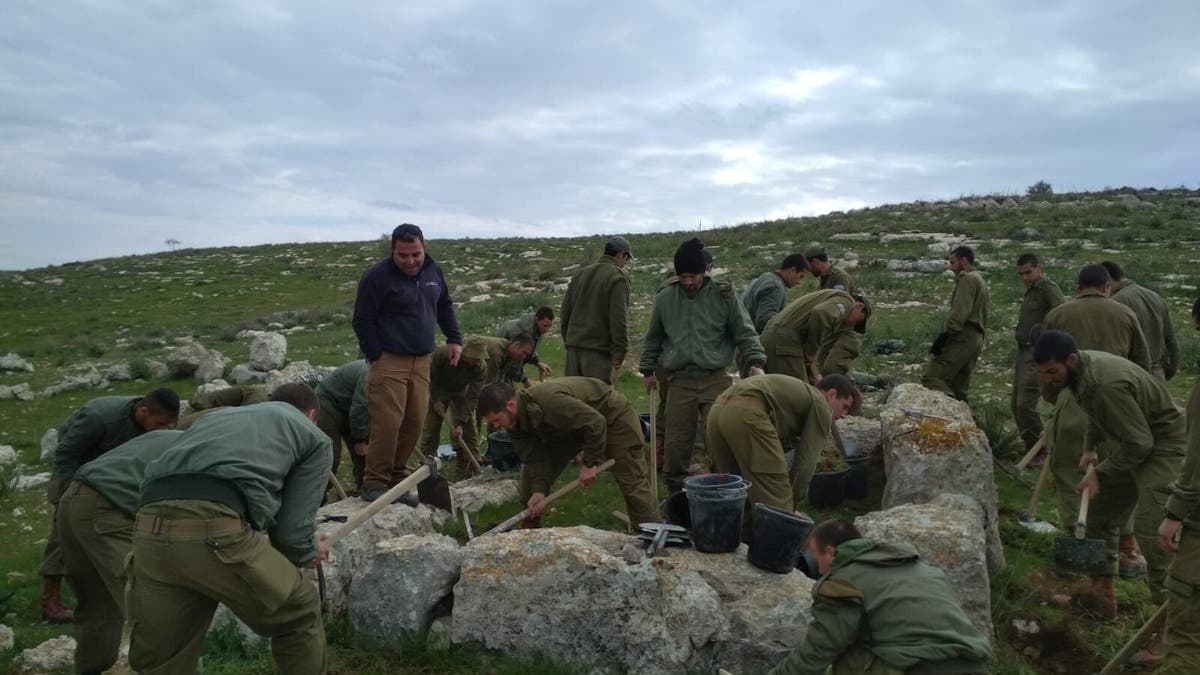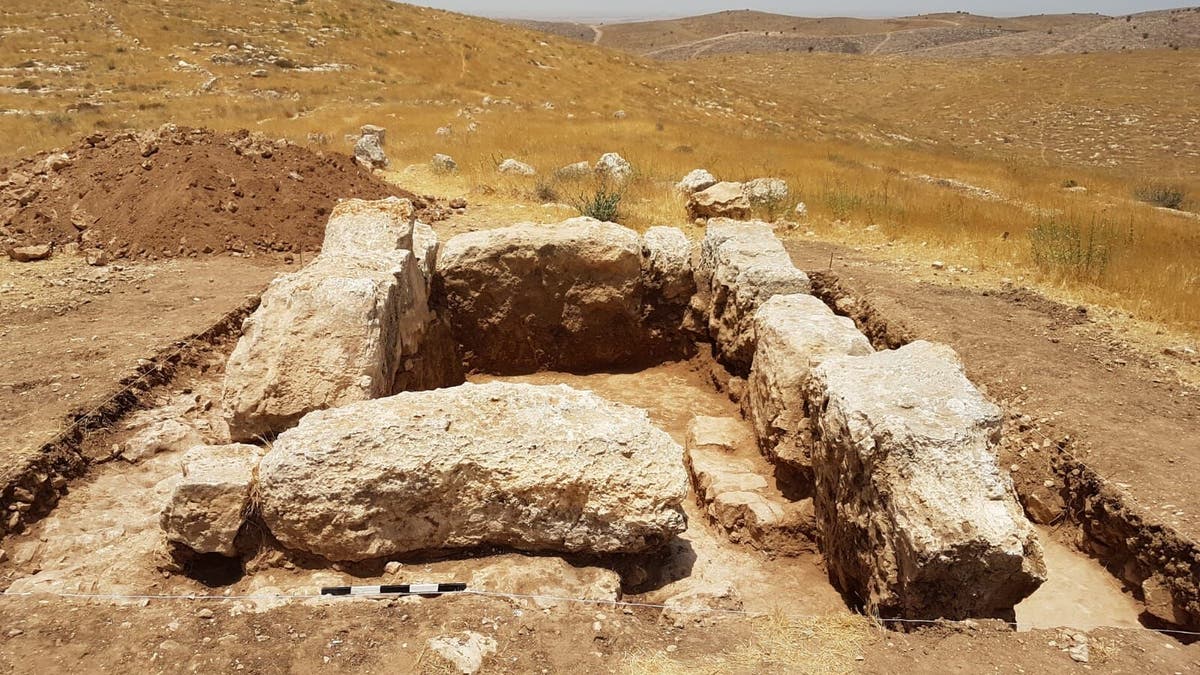Fox News Flash top headlines for June 19
Fox News Flash top headlines for June 19 are here. Check out what's clicking on Foxnews.com
Soldiers at a paratrooper base in Southern Israel have uncovered a Biblical-era watchtower.
The watchtower, which dates back to the 8th century B.C., was revealed during recent excavations by Israel Defense Forces troops working under the direction of the Israel Antiquities Authority.
The tower, which is thought to have once been about 16.5 feet high and 11.5 feet wide, would have commanded a view that included the Hebron Mountains, the Judean plain and the area around modern-day Ashkelon.
2,000-YEAR-OLD DESERT SETTLEMENT DISCOVERED IN ISRAEL, REVEALING ANCIENT REBELS' HIDDEN TUNNELS
Now about 6.6 feet high, the watchtower is constructed from large stones, some weighing 8 tons. Archaeologists believe that the tower dates back to the ancient Kingdom of Judah and the reign of King Hezekiah.

The remains of the ancient watchtower. (Israel Antiquities Authority)
"The strategic location of the tower served as a lookout and warning point against the Philistine enemy, one of whose cities was Ashkelon,” explained Sa'ar Ganor and Valdik Lifshitz, whom directed the excavation on the behalf of the Israel Antiquities Authority, in a statement. “In the days of the First Temple, the Kingdom of Judah built a range of towers and fortresses as points of communication, warning and signaling, to transmit messages and field intelligence.”
The tower is one of the observation points that connected the area’s cities, according to the archaeologists, who note that beacons of smoke and fire were used to transmit messages. “It is probable that the watchtower now uncovered is one of the towers that bore some of the beacons,” they added.
ANCIENT TOMB DOOR WITH STUNNING MENORAH CARVING REVEALED IN ISRAEL
Experts explain that beacons, or “pillars” are mentioned in the Bible.

Israeli soldiers taking part in the excavation of the ancient watchtower. (Israel Antiquities Authority)
Military activity at the watchtower appears to have ceased activity just before the Assyrian King Sennacherib launched an expedition to Judah in 701 B.C. The entrance to the tower was blocked at that time and the force stationed there moved to a nearby fortified town.
The soldiers’ modern counterparts gained a unique insight into the site thanks to the excavation. "This is the first time I participated in excavations. The connection to the land, and the fact that there were Jewish fighters in the past, gave me a sense of mission,” said Second Lieutenant Roi Ofir, of the Paratroopers Brigade reconnaissance battalion. “The fact that there was also a connection to the area where we carried out our own military manoeuvers; left us with a feeling that we were giving back.”
ARCHAEOLOGISTS SHED NEW LIGHT ON BIBLICAL SITE LINKED TO THE ARK OF THE COVENANT
The excavation was part of “The Nature Defense Forces Project –Commanders Take Responsibility for Their Environment,” which is led by the IDF’s Technology and Maintenance Corps. In addition to the Israel Antiquities Authority, Israel’s Ministry of Defense, the Society for the Protection of Nature in Israel, and the Israel Nature and Parks Authority also participated.

The excavation took place at a paratrooper base in southern Israel. (Israel Antiquities Authority)
The watchtower is the latest fascinating archaeological discovery in Israel. Experts recently discovered the remains of an ancient settlement in the Negev desert, uncovering ancient tunnels used by Jewish rebels against the Romans.
In another project, archaeologists uncovered the estate of a wealthy ancient Samaritan at Zur Natan in central Israel.
'JESUS' FACE' UNCOVERED AT ANCIENT CHURCH IN THE ISRAELI DESERT
Researchers have also shed new light on the history of a biblical site linked to the Ark of the Covenant.

The watchtower dates back to the 8th century B.C. (Israel Antiquities Authority)
Engravings of ships were also recently found on an ancient water cistern discovered in a city in the Negev desert.
Elsewhere, archaeologists confirmed the first full spelling of “Jerusalem” on an ancient stone inscription excavated in the area of Jerusalem’s International Convention Center, known as Binyanei Ha'Uma.
'SHIPS IN THE DESERT': STRANGE 2,000-YEAR-OLD GRAFFITI DISCOVERED IN ISRAEL
In separate excavations, experts discovered a site that may offer fresh insight into the ancient biblical kingdom of David and Solomon, and a trove of bronze coins, the last remnants of an ancient Jewish revolt against the Roman Empire, near the Temple Mount in Jerusalem.
In February 2018, archaeologists announced the discovery of a clay seal mark that may bear the signature of the biblical Prophet Isaiah.
Other finds in recent years include the skeleton of a pregnant woman, dating back 3,200 years, in Israel’s Timna Valley, at a place once called King Solomon’s Mines.
At the site of an ancient city on the West Bank, archaeologists are also hunting for evidence of the tabernacle that once housed the Ark of the Covenant.
Some experts also believe they have found the lost Roman city of Julias, formerly the village of Bethsaida, which was the home of Jesus' apostles Peter, Andrew and Philip.
CLICK HERE TO GET THE FOX NEWS APP
Follow James Rogers on Twitter @jamesjrogers

